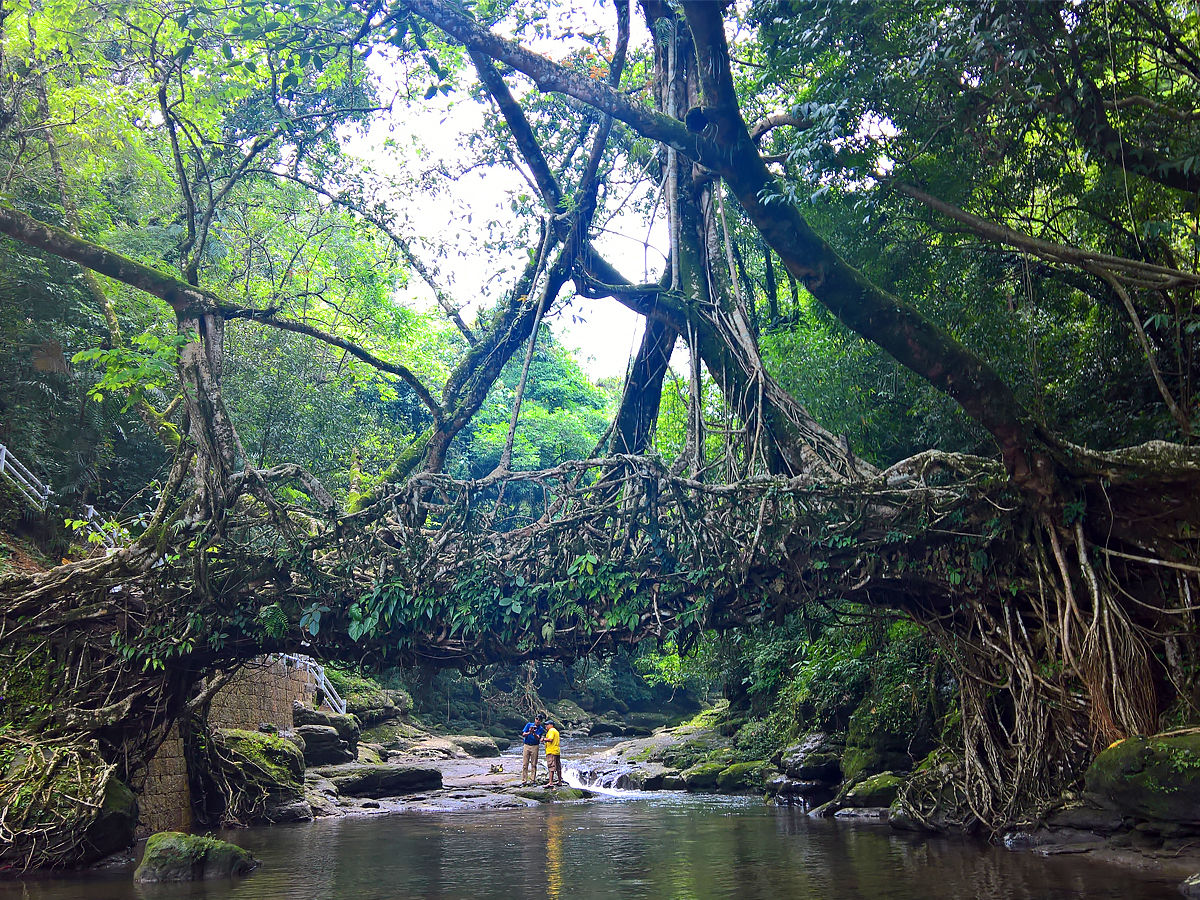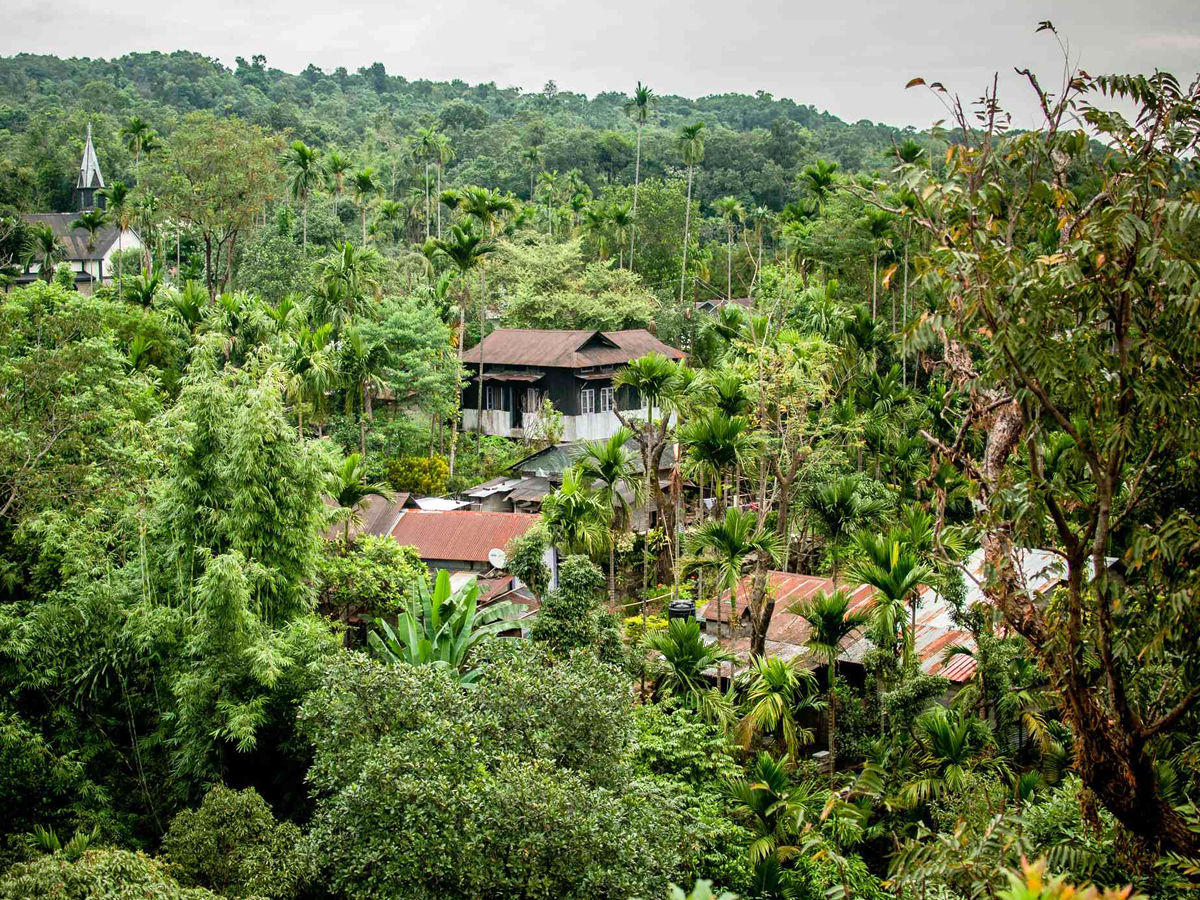It is often perceived that those living in the cities have a better understanding of cleanliness and those in villages give very little preference to cleanliness. But one village in Meghalaya has changed this perception to a large extent by becoming the cleanest village in Asia. Amid the Indian government’s nationwide initiative to educate the citizens about the importance of cleanliness and waste management, this small village in Meghalaya proved to be a virtual victory not only for the state but the entire country. Popularly known as God’s Own Garden, Mawlynnong has first named the cleanest village in Asia in 2003. Only those who are well educated can understand the importance of cleanliness and thus, it comes as no shocker that the village has a 100 percent literacy rate.
The beautiful village is also a flag-bearer of women empowerment and the hearts of people here are as clean as the streets of this village. Anyone who visits Meghalaya surely hears about the village and goes to visit the place. While several cities started giving priority to cleanliness and waste management only after the government’s campaign, Mawlynnong has been doing the work silently since the early 21st century.
If anyone wants to learn the art of co-existing with nature without violating it, Mawlynnong is the perfect place to visit. Since it is the cleanest village in Asia, it automatically becomes a jewel on the crown of India. The village is a central tourist attraction and people from all across the country and even from other parts of the world come just to visit the place and learn the art of cleanliness from the natives of one of the cleanest villages on the planet. Not just cleanliness and ethical values, the village is also famous for its cultural richness and various festivals are celebrated here throughout the year.
There are several reasons that make Mawlynnong a must-visit place.
- Cleanliness: The first reason to visit the village is obviously cleanliness. It has been the cleanest village in Asia since 2003 and has served as an inspiration for the entire country. The cleanliness model of the village is a work of art and every aspect including food management and waste management is taken care of. While a significant portion of the Indian population used to defecate in the open, the village had functional toilets in all houses since 2007. The villagers have placed dustbins made up of bamboo all across the streets and you can’t find even a chunk of garbage on the streets. Use of plastic bags is a big no here and smoking is prohibited as well. Anyone found violating the rules is fined heavily. Even the manure produced here is completely made from garbage dug into a pit. Planting trees is one of the favourite tasks of the villagers.

- Breathtaking Root Bridges: The enchanting view of the ancient root bridges in and near the village is completely breathtaking. The bridges in the village have been declared a world heritage site by UNESCO. The aerial roots of rubber trees are connected to make a path over a river. These bridges are a centre of attraction for the tourists here. The most beautiful of them is Jingmaham Living Root Bridge. These massive bridges are used by the villagers on a daily basis for crossing the rivers.

Also Read about, 6 Cleanest Beaches In The World
- Tribal Population: A majority of Mawlynnong’s population is the people from the Khasi tribe. Women empowerment is one of the pillars of this society and the children here get their mother’s last name unlike the rest of the world that follows a patriarchal rule. Not only this, the property of the mother is inherited by the youngest daughter of the family. This culture is an inspiration as well as a lesson for the rest of the country. The locals here are very welcoming and the hospitality here is unmatchable.

- Local Dishes: One of the best ways to learn about a country’s culture is through its local food. It also helps you get closer to the place. Most of the vegetables grown in Mawlynnong are organic and chemical-free. Even for those who prefer eating non-vegetarian food, the meat comes from in-house bred animals and birds. Some of the most famous dishes here are banana-flower, Jadoh and Tungrymbai.

Apart from the exotic streets and root bridges, the Mawlynnong waterfall and the Dawki river nearby are other key places of attraction. Dawki river is the cleanest river in the country and the water here is so clean that you can literally see through the river.
You can easily reach Mawlynnong through a bus or a cab from Shillong or Cherrapunji. The roads here are in very good condition, and you can reach the village in about 2 hours.



























